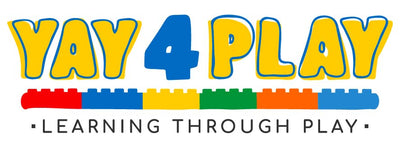As educators, we all know that hands-on, play-based learning is an effective way for kids to develop important skills and knowledge. But what if we told you there's a new method that takes this approach to the next level?
Enter the Six Bricks Method - a revolutionary way for kids to learn through play that is quickly gaining popularity in classrooms around the world.
What is Six Bricks?
The Six Bricks Method is a program developed by the LEGO Foundation that focuses on using just six different coloured bricks to help kids develop a wide range of skills.
Here are some factors that contribute to its success:
- The method is based on the idea that by providing children with a limited set of materials, they are encouraged to be more creative and think more critically.
- Six Bricks offers a variety of activities that help children develop essential skills such as problem-solving, creativity, critical thinking, and teamwork.
- The Six Bricks Method also promotes learning through play and autonomy, which helps to boost children's self-esteem and motivation.
- One of the best things about the Six Bricks Method is that it can be used with kids of all ages and abilities!
- The method is also inclusive, as it does not rely on language and can be adapted to any cultural context.
- Children are encouraged to think outside the box and come up with their own solutions to the problems they are presented with. This helps to develop their problem-solving skills and allows them to see things from different perspectives.
- Finally, the Six Bricks Method is a lot of fun for kids! They love the hands-on approach and the freedom to create whatever they can imagine. This can help to keep kids engaged in their learning and make the classroom a more enjoyable place to be.
Overall, the Six Bricks Method is a powerful tool for educators looking to bring hands-on, play-based learning to their classroom.

What are the educational theories and research behind Six Bricks?
The Six Bricks Method is rooted in several key educational theories and research studies.
- One of the key theories that informs the method is constructivism, which emphasizes the importance of active learning and the role of the learner in constructing their own knowledge. The Six Bricks Method is designed to be open-ended, allowing children to explore and discover on their own, which aligns with the principles of constructivism.
- Another key theory behind the Six Bricks Method is that of the Reggio Emilia approach, which emphasizes the importance of the child as a competent and curious learner. The method encourages children to take the lead in their own learning and provides opportunities for them to learn through exploration and experimentation.
Additionally, research has shown that learning through play can have a positive impact on child development. Studies have found that children who engage in play-based learning tend to perform better academically and exhibit better social skills.
- Six Bricks is also in line with the idea of the multiple intelligence theory that Howard Gardner proposed in the early 80s, which emphasizes that children can learn in different ways and have various strengths in different areas. The Six Bricks Method provides children with a variety of opportunities to learn and express themselves through the use of visual, kinaesthetic and problem-solving opportunities.
All these theories and research findings have helped to establish the Six Bricks Method as a leading approach to play-based learning in the education community.

How does Six Bricks align with the curriculum?
The Six Bricks Method aligns with the curriculum outcomes for preschool learning. The method is designed to help children develop a wide range of skills, many of which are listed in the NSW Early Years Learning Framework (EYLF) and the National Quality Framework (NQF).
According to the EYLF, the main outcomes for preschool children are to "develop a strong sense of identity" and "connect with and contribute to their world".
Six Bricks supports these outcomes by providing children with opportunities to explore, create, and express themselves.
Through hands-on bricks activities and educational games, children can develop:
- Problem-solving skills and creativity, which can contribute to a strong sense of identity.
- Through the collaborative nature of the method children learn to work with others which can help them connect with and contribute to their world.
- Gross and fine motor skills to help children build the muscles they need to be able to write and perform other physical tasks.
- Numeracy and literacy skills as they learn to recognise letters, numbers, shapes and colours.
The NQF also lists several key outcomes that the Six Bricks Method can help to support. These include:
- Children's learning and development are nurtured through play-based experiences
- Children develop critical thinking, problem-solving, and creativity skills
- Children build and maintain relationships and interact positively with others
- Children develop communication and language skills
It is important to note that Six Bricks method is not limited to preschool level: the method and its activities can be adapted to meet the needs and outcomes of different levels of education including at Primary School.

How do you use Six Bricks in your School?
Now is the perfect time to invest in Six Bricks for your classrooms.
With our simple bricks activities and simple exercises, you can ensure that your students have fun while learning important skills at the same time.
And remember our brick kits —order a kit including all the bricks of the correct colours as part of your teaching resources!
Here are the links with more information for you:
Check out our Kits for Educators.
Have a look at our training and course options.

We are keen to welcome you into our community!
